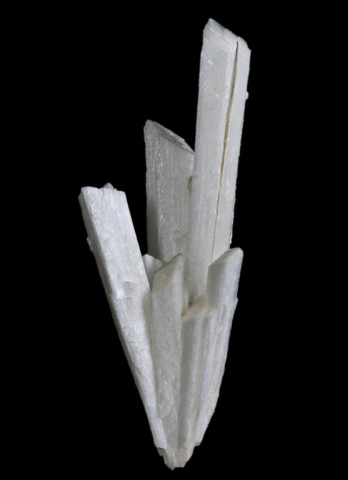LAUMONTITE
Class : Silicates
Subclass : Tectosilicates
Crystal system : Monoclinic
Chemistry : CaAl2Si4O12 4H2O
Rarity : Quite common
Laumontite belongs to the group of zeolites, hydrated aluminosilicates made up of a framework crisscrossed with channels into which water and large cations are inserted. It is a very common zeolite that exists in varied environments. It lines the cavities of basalts and andesites, but also acidic intrusive rocks (granites and pegmatites); it also exists in the cavities of epidote skarns, the cracks of metamorphic rocks (alpine clefts among others) as a product of decomposition of analcime. It is also known in remarkable samples in the oxidation zone of certain hydrothermal deposits (tungsten or lead). Unstable in outcrops, laumontite dehydrates into leonhardite by exfoliating along its cleavage planes. It was named in honor of the French mineralogist François Pierre Nicolas Gillet de Laumont who discovered the mineral in 1785 in Huelgoat (Brittany). Laumontite occurs in elongated prismatic crystals, often lamellar, terminated in a bevel, assembled in radiated or globular masses, and in acicular aggregates. Transparent to opaque, with a fairly typical pearly to porcelan luster, it is colorless, white to gray, sometimes yellowish or brownish, exceptionally red.
Main photo : Laumontite from Malad Quarry, Mumbai, Maharashtra, India © Rock Currier
Laumontite in the World
Twinning
A twin is known on {100} with re-entrant angles.
Fakes and treatments
No fakes recorded for this mineral species.
Hardness : 3.5 to 4
Density : 2.23 to 2.41
Fracture : Irregular
Streak : White
TP : Translucent to transparent
RI : 1.502 to 1.525
Birefringence : 0.012
Optical character : Biaxial -
Pleochroism : None
Fluorescence : White
Solubility : Hydrochloric acid
Magnetism : NoneRadioactivity : None





